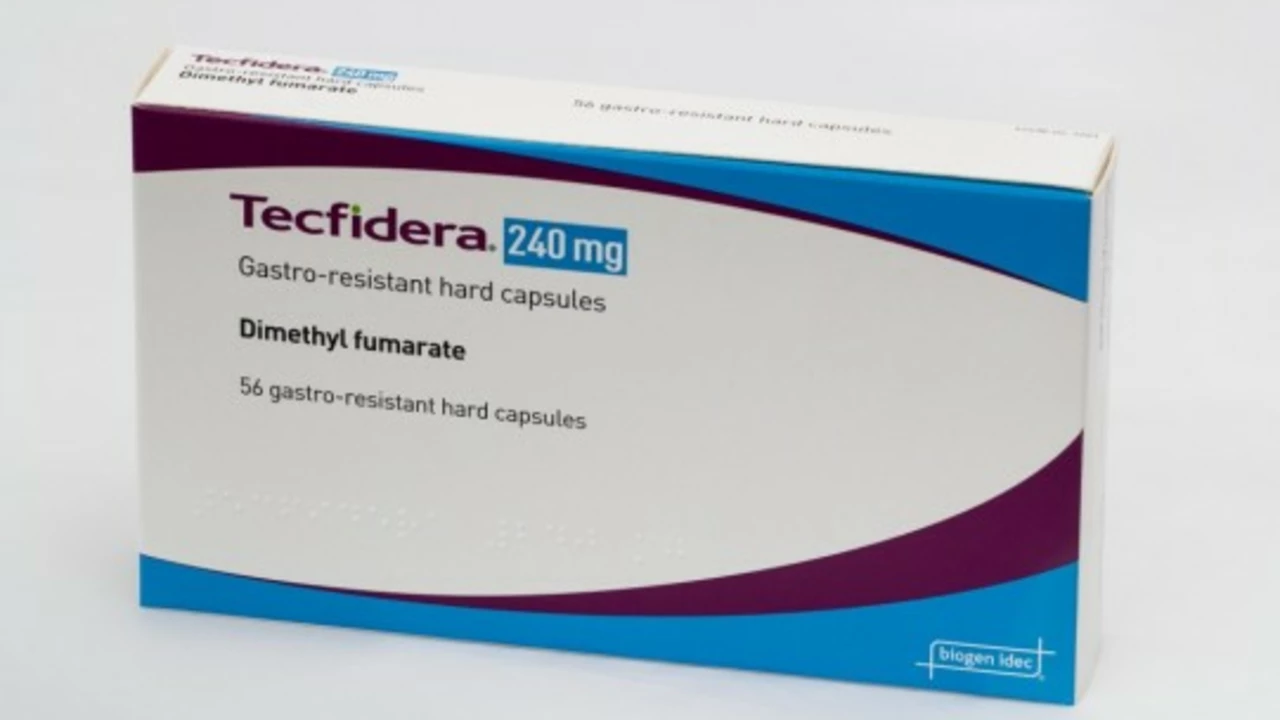Discovering the Potential of Dimethyl Fumarate
The journey of Dimethyl Fumarate, commonly known as DMF, began in a laboratory where its potential was first uncovered. For decades, scientists and researchers had been studying different compounds that could help in treating various diseases. DMF, a simple molecular structure with immense potential, soon caught their attention. Its journey from the lab bench to the patient's bedside has been nothing short of miraculous.
Understanding the Science Behind DMF
DMF is a compound that belongs to the class of drugs known as fumaric acid esters. These are used primarily for the treatment of psoriasis, a skin condition. The mechanism of how DMF works is fascinating. It essentially works by modifying the immune response, thereby reducing inflammation and preventing the damage to the skin cells.
DMF: A Breakthrough in Psoriasis Treatment
DMF emerged as a new hope for patients suffering from psoriasis. The traditional treatments available were either not effective or had severe side effects. DMF offered a fresh perspective. Clinical trials showed promising results, and the drug was approved for use in the treatment of psoriasis. The success of DMF in treating psoriasis was a significant breakthrough in dermatology.
The Unexpected Role of DMF in MS Treatment
While DMF was making headlines in the world of dermatology, researchers stumbled upon another exciting discovery. They found that DMF could also be effective in treating Multiple Sclerosis (MS). MS is a neurodegenerative disease where the body's immune system mistakenly attacks the protective covering of nerve cells in the brain and spinal cord. DMF's immunomodulatory properties showed promise in treating this disease.
Clinical Trials and FDA Approval
Following this discovery, rigorous clinical trials were conducted to study the effects of DMF on MS. The results were promising. DMF was found to reduce the frequency of MS relapses and slow down the progression of physical disability. Based on these results, in 2013, the FDA approved DMF for the treatment of relapsing forms of MS.
DMF: A Ray of Hope for MS Patients
The approval of DMF for MS treatment marked a significant milestone. It gave hope to millions of patients living with this debilitating disease. Patients could now have access to a new treatment option that not only reduces the frequency of relapses but also slows down the progression of the disease.
The Side Effects of DMF
Like every drug, DMF too has its side effects. These include flushing, diarrhea, nausea, and abdominal pain. However, these side effects are usually mild and tend to subside over time. Moreover, the benefits of DMF in treating psoriasis and MS far outweigh these side effects.
The Future of DMF
The journey of DMF is far from over. Researchers continue to study this compound to uncover its potential in treating other diseases. With its proven effectiveness in treating psoriasis and MS, the future of DMF looks promising.
DMF: A Testament to Medical Progress
The story of DMF is a testament to the progress that has been made in the field of medicine. It underscores the importance of scientific research and the role it plays in improving patient outcomes. The journey of DMF, from the lab bench to the patient's bedside, is a shining example of how medical breakthroughs can transform lives.
Conclusion
The journey of Dimethyl Fumarate is a fascinating one. From its discovery in a lab to its role in treating psoriasis and MS, it has come a long way. As we continue to uncover the potential of this compound, one thing is clear: the journey of DMF is far from over. It continues to offer hope to millions of patients worldwide and stands as a testament to the progress made in the field of medicine.



9 Comments
Dante Russello
Wow, the story of Dimethyl Fumarate really showcases how a tiny molecule can change lives, and it’s amazing to see science push forward, step by step.; The early labs that spotted its anti‑inflammatory mojo were onto something big, and they kept digging, testing, and refining, never losing hope.; When psoriasis patients finally got access to a therapy that actually calmed their skin without wreaking havoc, the field celebrated, and the momentum didn’t stop there.; Researchers noticed the same immunomodulatory signals easing neural inflammation, sparking curiosity about multiple sclerosis, and the data started to stack up.; Clinical trials then proved that DMF could cut relapse rates, slow disability, and give patients a real chance at a better quality of life.; The FDA’s green light in 2013 was a watershed moment, confirming that bench work can translate into bedside benefit.; Since then, doctors have been sharing success stories, patients report fewer flare‑ups, and the community feels a renewed sense of optimism.; Side effects like flushing and gastrointestinal upset are real, but they’re usually manageable, especially with dose titration.; The safety profile continues to be studied, and new formulations aim to reduce those pesky side effects, improving adherence.; What’s fascinating is that the chemistry behind DMF is relatively simple, yet its biological impact is profound, reminding us that complexity isn’t always required for efficacy.; Ongoing research is already looking at neuroprotective roles beyond MS, hinting at potential applications in Parkinson’s and even certain cancers.; Partnerships between academic labs and biotech firms are accelerating the pipeline, bringing novel delivery methods into the mix.; Patient advocacy groups are vocal, pushing for broader access and insurance coverage, which in turn fuels more funding for investigation.; The journey from a bench experiment to a life‑changing drug illustrates the power of perseverance, collaboration, and translational science.; In short, DMF’s saga is far from over, and the medical community eagerly watches the next chapters unfold, hopeful for even more breakthroughs.
James Gray
Totally agree, this drug is a game‑changer, and it’s definetly making a huge impact on folks who have struggled for years; the optimism around new uses is real, and the community is reallly excited to see what comes next.
Scott Ring
I’ve been following the DMF updates for a while, and it’s cool to see how a skin‑treatment turned into a neuro‑immune therapy; the cross‑disciplinary work really highlights how interconnected our bodies are, and it pushes us to think beyond silos.; Plus, the patient stories coming out on Reddit and forums show real‑world benefits that sometimes outshine the stats in papers.
Shubhi Sahni
Absolutely, the collaborative spirit behind these trials is worth celebrating; scientists, clinicians, and patients all pitch in, creating a feedback loop that speeds up discovery.; It’s also a reminder that tolerable side‑effects can be managed with proper guidance, making the risk‑benefit ratio favorable for many.
Danielle St. Marie
DMF is overrated, only works because of big pharma hype 😊
keerthi yeligay
The potential of DMF seems unlimited, though its long‑term safety still isnt fully known; many hope its benefits will outweigh the risks soon.
Peter Richmond
Indeed, ongoing longitudinal studies are essential to ascertain the durability of therapeutic outcomes; regulatory bodies will likely require robust post‑marketing surveillance.
Bonnie Lin
DMF’s path shows how a simple molecule can have big effects; it also teaches us the value of repurposing old drugs.
sara fanisha
Totally! It’s awesome to see science turning ideas into real help for people.